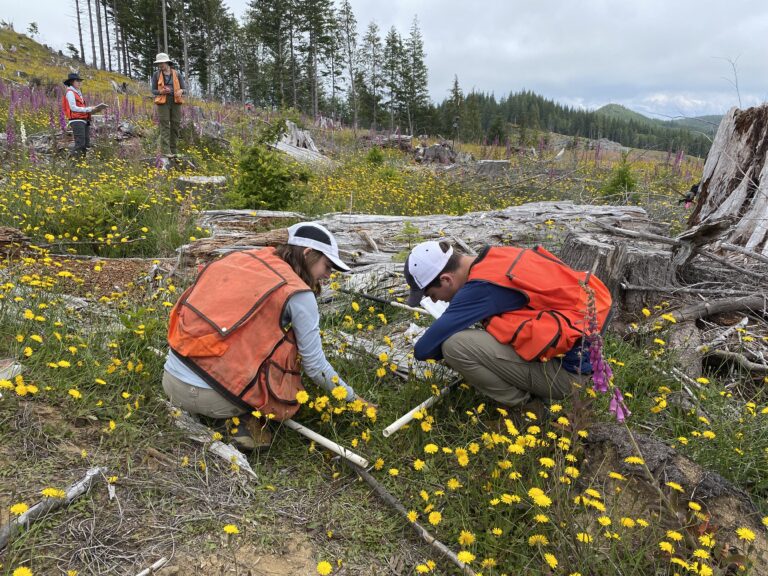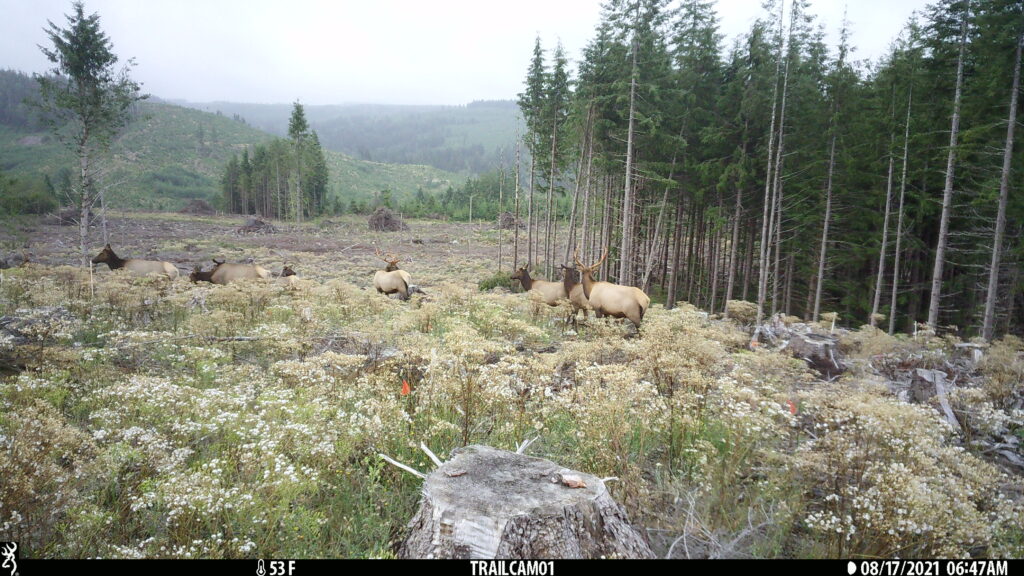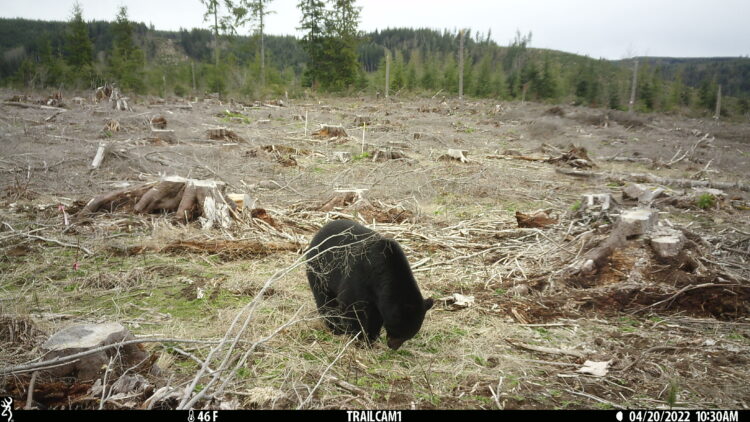Ethnoforestry Field Trials
The ethnoforestry field trials are an approximate 5-acre, small scale study on lands managed by the WA Department of Natural Resources between Forks and La Push, WA. This study uses principles of ethnoforestry, or a people-focused forest management, to address uncertainties around managing for early seral understory habitat, wildlife, community values, and timber together.
Understory species were planted in rows within a portion of the treatments, along with timber seedlings, to better understand how we may actively promote certain plants that have value to local communities and/or wildlife, while also growing a successful timber crop. This can be compared to a standard practice control where only Douglas-fir seedlings are planted at densities being used in the rest of the unit. In addition, three browse control treatments were implemented to determine the quantity of browse and how that differs between areas, treatments, or species.
A factorial study design is used to test both browse control and vegetation treatments within 27 experimental units that are each 0.1 acres and surrounded by a buffer on all sides. This resulted in the creation of nine unique treatments.

A description of each treatment is below:
Agroforestry: Understory species planted in rows at 1⁄2 m spacing. 180 trees per acre (TPA) of Douglas-fir were planted in between understory rows. Understory plants were strategically not planted adjacent to seedlings to limit competition.
Early Seral Management: Understory species planted in rows at 2m spacing. 180 TPA of Douglas-fir were planted along with 50 TPA of red alder in between understory rows.
Control: 360 TPA of Douglas-fir were planted
Wildlife Fencing: 8-ft wildlife fencing installed around experimental unit.
No Exclosures: Open to all browse. No restrictions.
Treated with Repellent: The liquid repellent Plantskydd was applied to all understory plants and seedlings in this treatment.
Treatments were implemented in Winter 2021, followed by the first post-treatment measurements in the Summer of 2021, 2022, and 2023. Monitoring of understory regeneration, planted understory, seedlings, and wildlife cameras will continue going forward.


Information gained from this experiment has been used to inform the Type 3 Watershed Experiment. For more information or to get involved, please contact ONRC Research Scientist Courtney Bobsin at cbobsin@uw.edu.